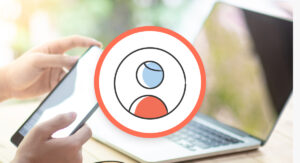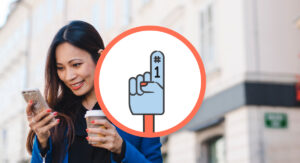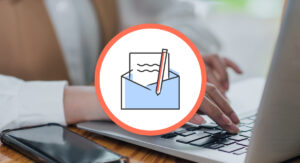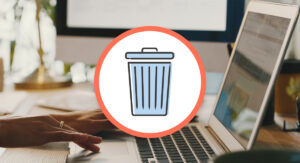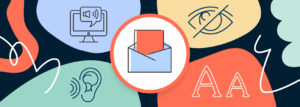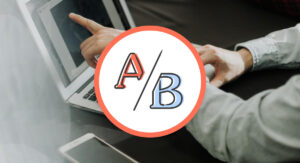Increase open rates with this tip from Hollywood

Increase open rates with this tip from Hollywood
TV is a guilty pleasure of mine- I’m not afraid to admit it. So, it's no secret that my favorite Friday night pastime is a Netflix binge with a bowl of buttered popcorn. If you’re like me, you’ve probably experienced that moment where a TV episode or movie finishes on a cliffhanger, and you just have to know what happens next.
So you watch the next episode and, again, another cliffhanger. Before you know it, it’s 4 hours later and you’re still going. If it’s a movie you’re watching, you’re left to fester in this abandonment and wonder the fate of the lead until the producers decide to release the followup. Until then, you’ll ease the pain with an associated spin-off or or an alternative that might provide insight.
It’s so hard to just allow the cliffhanger to just… hang. Why? FOMO- Fear of missing out. Once we know the beginning of a story, we feel entitled to the ending.
Think of your emails as a story-they should always have a beginning, middle and end.
Continue reading to learn about a nifty Hollywood technique called “open loops,” often used to create the gripping cliffhanger-style endings that heighten FOMO and keep us wanting more. Then, learn how you can apply this technique to your subject lines to help improve your email open rates.
What is the “open loops technique”?
The open loop technique is a copywriting trick where you open a story in your copy, but never close it with a satisfactory ending. Kind of like opening a loop, but never closing it.
It works because our brains are hardwired to seek out the information we desire. In fact, a study by George Loewenstein of Carnegie-Mellon found that we actually get significant feelings of anxiety when there’s a gap between what we know and what we want to know, and we’re compelled to seek out the information to reduce those feelings.
It’s this exact theory that explains why we feel so uneasy after being left with a cliffhanger in a TV episode and why we feel so compelled to watch the next episode to find out what happened.
Use open loops to increase your email open rates.
So how does this help you write better email subject lines and increase your open rates? By using the open loops technique in your subject lines, you create that gap of information that compels people to open your email to learn more and, effectively, “close the loop.”
The key to making this work, however, lies in the “what we want to know” part of Loewenstein’s equation.
Think about it: There are dozens of subjects you probably don’t know that much about, because you’re not interested or you don’t know they exist. This means you’re not seeking out information about these subjects either. In other words, there’s no gap between what you know and what you want to know.
So, before you start incorporating this technique into your own subject lines, remember there are masses of information people don’t know, and an open loop will only work in your subject lines if you first show the reader why the information is relevant, desirable, and necessary for them.
Examples of open loops in action
To help you put this into practice, we’ve pulled some campaigns from our inboxes and analyzed how these have been made effective using open loops.
Subject: What Bruce Lee can teach you about design
Fast.co Design did a great job of incorporating the open loops technique into this subject line. Being a design-focused publication, their subscribers are interested in learning about design, so they use that as the hook to show the reader this is information they want, while using the Bruce Lee reference to show them what they don’t know and establish the information gap that compels people to open the email.
Subject: This little-known copywriting formula can increase your email click-through rate
We used the open loops technique in the subject line of a campaign for our recent blog post on the BAB copywriting formula. Being an email marketing blog, our readers are interested in improving their click-through rates, so we used that as the hook to show the reader that this is information they want, while using the “little-known secret” line to establish what they don’t know and create an information gap that compels people to open the email.
It’s all about balance when using open loops.
If you’ve ever seen a story from sites like Upworthy being shared on your Facebook newsfeed, you might recognize this technique at work in their distinctive “This guy started filming his dog. What happens next will shock you” style headlines.
Like all copywriting techniques we’ve talked about on this blog, the key to using them effectively is balance. If you overuse any technique, your audience will start to become immune to it, and it’ll eventually stop having the desired effect on your readers.
Similarly, you may also want to consider the effect this technique will have on your brand. Some people are turned off by the extreme clickbait versions of this technique, and the detriment to your brand may not be worth the increase in open rates.
For us here at Emma, our approach is to use them in moderation. We’re okay with incorporating the technique subtly (such as the title of this post and the subsequent email), but you’ll never see us write a subject line like “We tried this Hollywood secret in our emails. The results nearly brought me to tears,” as that just isn’t our brand.
Bonus: Additional copywriting tips you can use.
Incorporating the open loops technique into your subject lines can increase your open rates by creating a sense of FOMO that compels people to open your email.
However, like any formula or technique, it’s all about balance. Use it too frequently, and it can lose its effectiveness. Use it to the extreme, and it can reflect negatively on your brand.
The good news is that nine out of ten marketers prefer email marketing to distribute organic content—which means huge potential for your brand to make an impact and increase your bottom line via email messaging efforts.
Besides creating compelling subject lines, it’s important to pay attention to the other aspects of your email to ensure you’re meeting your audience’s expectations, once they open your message. In fact, a well-thought-out plain text email with exceptional copywriting can easily beat out a designed email.
How can you improve your email marketing? Let’s take a look at a few copywriting tips that align with the email loop strategy.
Be personal.
In our complex digital work, keeping your email marketing personalized can’t be stressed enough. You want every subscriber to feel like you’re writing a one-on-one email just to them by not only including their name, but also their geographic location, gender preference, and every past purchase history.
Beyond the content itself, write in the second person and keep it conversational. You want to reach your readers on a more personal level, instead of feeling like you’re constantly trying to sell to them. In fact, 77% of consumers prefer a brand that provides personalization in their services and experiences.
Takeaway: use language to hone in on the customer, not the brand, to stay focused on providing value.
Source: Really Good Emails
Keep it short and sweet.
No one has time (or the desire, quite frankly) to read paragraphs and paragraphs of long-handed copy. Email should be scannable—meaning it only takes a reader a few seconds to understand what the email is about and why they should click through. If you continue to write too much, you risk the chance of losing that subscriber to the next email, simply because they can’t read your copy quick enough.
As an alternative, create a way to summarize your objective briefly and lead them to your website landing page to learn more. This will help not only increase your click-through rates, but also drive valuable web traffic.
How can you do this? Your email should have one goal and one direct action you want your subscriber to take. Once you have that goal outlined—be it ordering food, working out, or using a 10% coupon code—writing brief content will be much easier.
Takeaway: be concise in your copywriting to increase your click-through rates by summarizing your objectives and driving website traffic.
Source: Really Good Emails
Provide value with benefits.
You know the value of your brand, but do your subscribers? What is it that they value in your brand? What do they value in other brands comparable to yours? Email marketing is an excellent time to explain to your audience the benefits of using your products or services versus others. However, many marketers get carried away detailing features instead of actual value.
For example, if you’re offering a 25% discount code on a particular software, you need to first lay the groundwork of why it’s important. Will it help save costs? Does it offer new technology that streamlines your process? Will it increase your ROI? The goal is to write copy that summarizes how your business will help solve your customer’s problems—not simply listing a feature without any backing of why it’s important.
Takeaway: focus on how your products and services make your subscribers' lives easier, which will evoke genuine emotion-based interest. Ditch the sales pitch!
Source: Really Good Emails
Wrap up
Now that you understand a little more about email copywriting, what are your thoughts on the open loops technique? Have you fallen prey to FOMO? Think about the way you yearned for more. Now, apply that to your email copy and prepare for them to keep coming back for more.
OK- you’ve now got the tools to master copywriting! Request a live demo of an Emma account and see how to kick your email campaigns up a notch with beautiful emails that win the inbox.
MOST RECENT ARTICLES
Want to engage your audience and grow your brand? Try Emma's robust easy-to-use product today.

